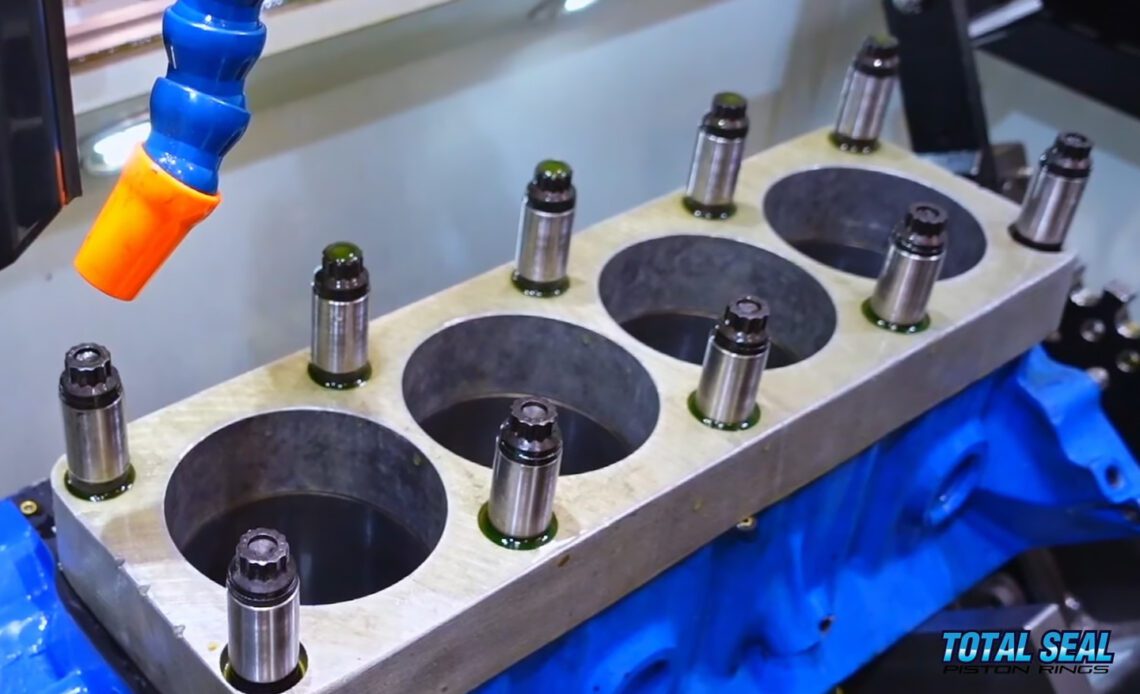In the past, we’ve discussed that different piston rings and different use applications all like slightly different honing techniques. While most builds will probably be fairly forgiving of a hone with numbers a little more in one direction than the other, NHRA Pro Stock does not fall under that umbrella. So, when you have someone like Greg Anderson — the winningest Pro Stock diver of all time — machining a block, your tolerances are tight and your numbers exact.
Modern piston rings are a different animal than the rings of even a decade or two ago. Besides that, our understanding of what is actually happening on and in the walls of the cylinder is more advanced than it has ever been before. So it stands to reason that today’s processes and methods are different — and measurably better — than they were just a couple of short decades ago. KB Racing’s Anderson, along with Total Seal’s Lake Speed, Jr., walk through the process of honing a block for a modern ring package.
Making a Round Hole
“The first key is to make the cylinder round,” says Anderson. There are two key components to doing that: a quality honing machine, like the Rottler H85AX Anderson uses, and using a torque plate on the block. “If you were to hone this block without a torque plate and then go bolt your cylinder head on, the bore will be a completely different shape,” Anderson explains.
The torque plate is a cylinder head analog, with clearance to access the cylinder bore through the center of the plate. By using the same cylinder head fasteners as you will in the engine, tightened to the same torque, you are putting all of the stresses into the block that will be present when the engine is assembled, and then making sure you create a round, straight bore.
the use of a deck plate while honing applies the same forces to the block as having a cylinder head bolted on. This ensures that you’re making a round, straight bore in the compressed state of the block.
Being Abrasive
The first step in preparing a modern cylinder finish is using a modern abrasive. “We use a 170-to-200-grit diamond cutting stone,” explains Anderson. We’re looking for a certain depth of the groove, basically, the Rvk.” You might recognize the term “Rvk” from some of our other articles on honing; it’s the “valley depth” measurement of the cylinder finish, as measured by a profilometer, in microinches.
“That valley…
Click Here to Read the Full Original Article at DragzineDragzine…

